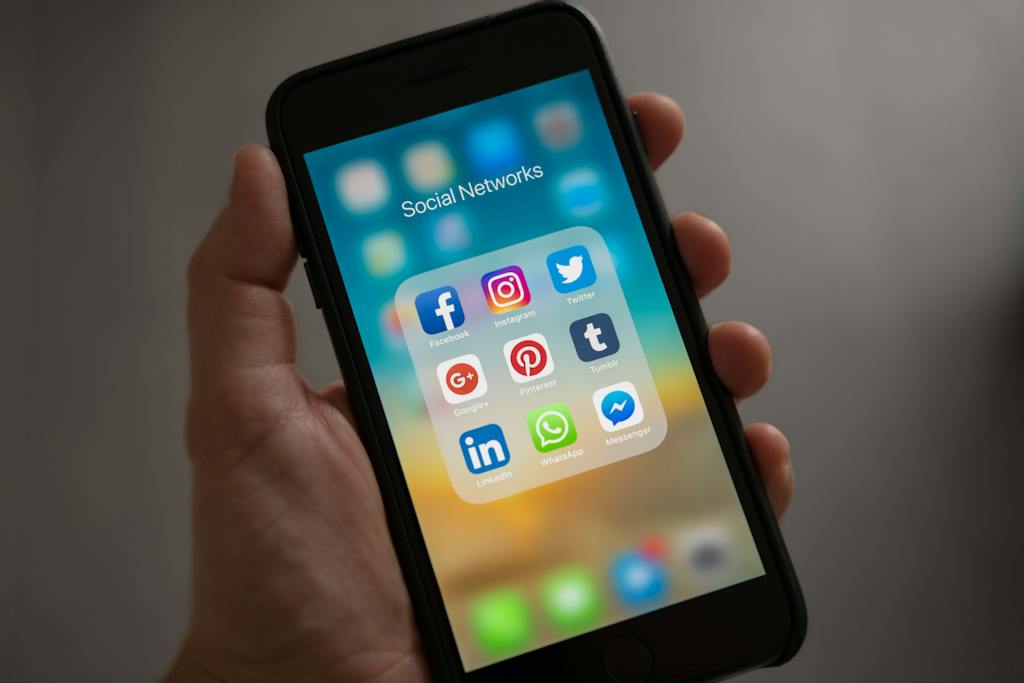Mobile Marketing: Everything You Need To Know
In the ever-evolving landscape of digital marketing, Mobile Marketing is synonymous with innovation and accessibility. Mobile Marketing encompasses strategies designed to reach and engage audiences through smartphones and other mobile devices. With the exponential rise in mobile usage, optimizing marketing efforts for these platforms has become paramount for businesses worldwide.
From SMS campaigns to app-based advertising and responsive website design, mobile Marketing comes in various forms, each tailored to captivate on-the-go consumers. Uncover more about mobile marketing with this article!
Mobile Website Optimization

In today’s mobile-driven world, ensuring that your website is optimized for smartphones and tablets is crucial for engaging users and driving conversions. Mobile Website Optimization encompasses several key strategies, each aimed at enhancing the user experience on mobile devices.
Responsive Design: Adapting to Every Screen Size
Responsive design lies at the heart of Mobile Website Optimization. It involves creating websites that can seamlessly adapt to various screen sizes and resolutions, ensuring a consistent and visually appealing experience across all devices. By using fluid grids, flexible images, and media queries, responsive design enables websites to adjust their layout and content presentation dynamically based on the device being used. This approach not only eliminates the need for separate mobile-specific websites, but it also ensures continued usage by your clients due to user-friendliness of your design.
Accelerating Load Speeds: Keeping Users Engaged
Mobile users expect fast-loading websites, and even minor delays can lead to frustration and, at worst, abandonment. Accelerating load speeds is, therefore, a critical aspect of Mobile Website Optimization.
This involves optimizing images, minifying CSS and JavaScript files, leveraging browser caching, and implementing content delivery networks (CDNs) to reduce latency and improve performance. By prioritizing speed optimization techniques, businesses can ensure that their websites load quickly on mobile devices, providing users with a smooth and enjoyable browsing experience.
Reducing Bandwidth Usage: Catering to Mobile Constraints
Mobile devices often operate on limited data plans and slower network connections, making bandwidth optimization essential for Mobile Website Optimization. Minimizing the size of web pages, compressing images, and optimizing code can help reduce the amount of data transferred between the server and the device, leading to faster loading times and lower data consumption. By optimizing for bandwidth efficiency, businesses can cater to the constraints of mobile users and improve the accessibility of their websites across different network conditions.
Enabling Click-to-Call and Location Functionality: Driving Real-World Engagement
Incorporating features like click-to-call and location functionality can greatly enhance the user experience on mobile devices. Click-to-call buttons allow users to initiate phone calls to businesses directly from the website, making the process of contacting customer support or making inquiries a breeze.
Similarly, location functionality enables businesses to provide personalized experiences based on the user’s geographical location, such as displaying nearby store locations or offering location-based promotions. By enabling these features, businesses can drive real-world engagement and manage seamless interactions between their online presence and offline activities.
Mobile Website Optimization involves a comprehensive approach to enhancing the user experience on mobile devices. By implementing responsive design, accelerating load speeds, reducing bandwidth usage, and enabling click-to-call and location functionality, businesses can create mobile-friendly websites that cater to the needs and preferences of today’s on-the-go users.

SMS/MMS Marketing
SMS/MMS Marketing has emerged as a powerful tool for businesses to engage with their audience directly. Let’s explore the intricacies of this strategy.
Collect Opt-in Numbers and Gain Consent: Empowering the Audience
The foundation of SMS/MMS Marketing lies in building a permission-based audience. This involves implementing clear opt-in mechanisms across various touchpoints, such as websites, social media, and physical locations. By offering transparent information about the type and frequency of messages subscribers will receive, businesses can gain explicit consent from their audience. This not only ensures compliance with regulations but also cultivates a sense of trust and transparency, laying the groundwork for meaningful interactions.
Personalize Message Content: Tailoring Experiences for Individuals
Personalization is paramount in SMS/MMS Marketing. Beyond addressing recipients by name, businesses can leverage subscriber data to craft highly targeted and relevant messages. This may include tailoring offers based on past purchase history, preferences, or demographic information. By delivering personalized content, businesses can capture the attention of their audience and drive engagement. Moreover, incorporating dynamic content elements, such as personalized product recommendations or time-sensitive promotions, can further enhance the effectiveness of campaigns and increase conversion rates.
Track Open and Conversion Rates: Optimizing Campaign Performance
Tracking and analyzing key metrics is essential for optimizing the effectiveness of SMS/MMS Marketing campaigns. By monitoring metrics such as message delivery rates, open rates, click-through rates, and conversion rates, businesses can gain valuable insights into subscriber engagement and campaign performance. This data enables marketers to identify trends, refine targeting strategies, and A/B test different message formats or offers to maximize ROI. Additionally, tracking conversion rates allows businesses to measure the direct impact of their campaigns on driving desired actions, such as purchases or sign-ups, providing valuable feedback for future optimizations.
In summary, SMS/MMS Marketing offers businesses a direct and personalized way to engage with their audience. By prioritizing opt-in collection, personalizing message content, and tracking campaign performance, businesses can create impactful campaigns that resonate with subscribers and drive meaningful results.

Push Notifications in Mobile Marketing
Push notifications have become a cornerstone of mobile app engagement, allowing businesses to connect with their users instantly. Let’s delve into the key aspects of this communication channel.
Send Timely, Relevant Messages to App Users
The essence of push notifications lies in their ability to deliver timely and relevant messages to app users. By leveraging user data, behavior patterns, and contextual information, businesses can send notifications that resonate with recipients. Whether it’s a personalized promotion, a reminder about an abandoned cart, or breaking news updates, the goal is to provide value and enhance the user experience. Timeliness is crucial; notifications should be sent at opportune moments when they are most likely to capture the user’s attention and prompt action.
Adapt Tone, Timing, and Triggers Over Time
Effective push notification strategies go beyond one-size-fits-all approaches. They involve continuously adapting the tone, timing, and triggers of notifications based on user feedback and engagement metrics. A/B testing different messaging styles, experimenting with delivery times, and refining trigger conditions allow businesses to optimize their notification strategy for maximum impact. Moreover, employing machine learning algorithms and predictive analytics can help predict user preferences and behavior, enabling more personalized and effective communication over time.
Allow Customization of Notification Settings
Respecting user preferences is paramount in push notification marketing. Providing users with the ability to customize their notification settings empowers them to tailor their app experience according to their preferences. This may include options to choose the types of notifications they wish to receive, set frequency limits, or adjust notification preferences based on time or location. By offering these customization options, businesses can enhance user satisfaction, reduce opt-out rates, and foster a positive relationship with their audience.
Ergo, push notifications serve as a powerful tool for engaging app users in real-time. By sending timely, relevant messages, adapting strategies based on user feedback, and allowing customization of notification settings, businesses can create impactful notification campaigns that drive user engagement, retention, and ultimately, business growth.
In-App Messaging & Advertising in Mobile Marketing
In-app messaging and advertising represent dynamic avenues for businesses to engage with users directly within mobile applications. Let’s explore the key strategies and metrics driving success in this domain.
Tailor In-App Banners, Videos to User Data
The hallmark of effective in-app messaging and advertising is personalization. By harnessing user data—such as demographics, behavior, and preferences—businesses can tailor in-app banners, videos, and other messaging formats to resonate with individual users. Whether promoting relevant products, delivering personalized offers, or showcasing interactive content, customization enhances user engagement and drives conversions. By delivering content that aligns with user interests and needs, businesses can foster stronger connections and increase the likelihood of user interaction.
Test Variants to Optimize Performance
Continuous optimization is key to maximizing the effectiveness of in-app messaging and advertising campaigns. A/B testing different variants—such as messaging copy, visual elements, and call-to-action buttons—allows businesses to identify which combinations resonate best with their audience. By systematically testing and iterating on various elements, businesses can refine their messaging strategy, improve user engagement, and ultimately drive better results. Additionally, leveraging multivariate testing techniques enables businesses to uncover insights into the impact of individual components and their interactions, facilitating data-driven decision-making and continuous improvement.
Measure View-Through and Click Rates
Measuring the performance of in-app messaging and advertising campaigns is essential for evaluating their effectiveness and optimizing future efforts. View-through and click-through rates serve as key metrics for assessing user engagement and campaign success.
- View-through rates measure the percentage of users who view an ad or message but do not immediately click on it, providing insights into the overall impact and visibility of the campaign.
- Click-through rates, on the other hand, measure the percentage of users who actually clicked on an ad or message, indicating their level of interest and engagement.
Monitoring these rates allow businesses to make better marketing decisions and strategies due to the fact that these rates are showcasing actual client interaction and measuring actual client engagement.
In-app messaging and advertising offer powerful channels for engaging users within mobile applications. By tailoring content to user data, testing variants to optimize performance, and measuring view-through and click rates, businesses can create impactful campaigns that resonate with users and drive meaningful results.

Location-Based Mobile Marketing
Location-based mobile marketing plays off of the power of geolocation data to deliver targeted messages and offers to specific users based on their physical location. Let’s explore the key strategies driving success in this dynamic field.
Geo-fencing to Target Nearby Users
Geo-fencing enables businesses to create virtual boundaries around specific geographic areas, such as retail stores, event venues, or city centers. When users enter or exit these predefined areas, they can receive targeted messages, promotions, or notifications directly on their mobile devices. This proximity-based targeting allows businesses to engage users when they are most likely to be receptive, whether it’s offering a discount when they’re near a store or providing event details as they approach a venue. By leveraging geo-fencing technology, businesses can enhance user experiences, drive foot traffic, and increase conversions.
Direct Mail Integration via QR Codes
Integrating direct mail with location-based mobile marketing can amplify the reach and effectiveness of campaigns. By incorporating QR codes into direct mail pieces, businesses can seamlessly bridge the gap between offline and online channels. Users can simply scan the QR code with their mobile devices to access exclusive offers, personalized content, or location-specific information. This integration not only enhances the user experience but also provides valuable attribution data, allowing businesses to track the effectiveness of their direct mail campaigns and measure the impact on online interactions and conversions.
Attribution Tracking and Personalized Offers
Attribution tracking is essential for measuring the effectiveness of location-based mobile marketing campaigns and optimizing ROI. By leveraging attribution tracking tools and techniques, businesses can accurately attribute user actions and conversions to specific marketing touchpoints, including geo-fenced locations, QR code scans, or in-app interactions. This granular level of insight enables businesses to understand the customer journey, identify high-performing channels, and allocate resources effectively. Moreover, by combining attribution data with user demographics, preferences, and behavioral insights, businesses can deliver personalized offers and recommendations that resonate with individual users, driving engagement and loyalty.
To summarize, leveraging geo-fencing technology, integrating direct mail with QR codes, and implementing attribution tracking and personalized offers, businesses can create targeted campaigns that drive foot traffic, enhance user experiences, and ultimately, drive business growth.

Emerging Tactics for Mobile Marketing
In the ever-evolving landscape of mobile marketing, staying ahead of the curve is essential for businesses seeking to capture audience attention and drive engagement. Let’s delve into some of the most innovative and promising emerging tactics reshaping the mobile marketing landscape.
Adoption of Messaging Apps and Platforms
Messaging apps have emerged as fertile ground for businesses to connect with their audience in a more personal and interactive manner. With billions of users worldwide, platforms like WhatsApp, Facebook Messenger, and WeChat offer businesses the opportunity to engage users through one-on-one conversations, group chats, and even chatbots. From customer support and product recommendations to personalized promotions and transactional updates, messaging apps enable businesses to provide seamless and convenient experiences, fostering deeper connections and driving conversions.
Experimentation with Mobile Wallets
The rise of mobile wallets presents a wealth of opportunities for businesses to streamline transactions and enhance the overall customer experience. By integrating with popular mobile payment platforms like Apple Pay, Google Pay, and Samsung Pay, businesses can offer users a seamless and secure way to make purchases, redeem coupons, and collect loyalty rewards directly from their smartphones. Moreover, mobile wallets enable businesses to leverage location-based notifications and personalized offers, driving foot traffic and increasing sales both online and offline.
Evolution of Augmented Reality Ads
Augmented reality (AR) is revolutionizing the way businesses engage with their audience, offering immersive and interactive experiences that blur the lines between the physical and digital worlds. AR ads allow users to visualize products in their real-world environment, try on virtual clothes or accessories, and even interact with branded content in innovative ways. From Snapchat’s AR lenses to Facebook’s Spark AR Studio, platforms are increasingly offering tools and ad formats that enable businesses to create compelling AR experiences that captivate audiences and drive brand engagement.
Examples of the Most Modern Emerging Tactics
Some of the most modern emerging tactics in mobile marketing include:
- Social Commerce: Businesses are leveraging platforms like Instagram, TikTok, and Pinterest to facilitate seamless shopping experiences. Shoppable posts, product tags, and live shopping events are just a few examples of how brands are integrating ecommerce into social media platforms to drive sales and engagement.
- Voice Search Optimization: With the increasing prevalence of voice-enabled devices and virtual assistants like Amazon Alexa, Google Assistant, and Apple Siri, businesses are optimizing their content and marketing strategies for voice search. This includes adapting SEO tactics, creating conversational content, and ensuring compatibility with voice search queries to capture this growing market.
- Influencer Marketing: Collaborating with social media influencers and content creators has become a staple in modern marketing strategies. Influencers authentically promote products and services to their engaged audiences, driving brand awareness, credibility, and ultimately, sales.
- Progressive Web Apps (PWAs): Progressive Web Apps combine the best features of web and mobile apps, offering users a fast, reliable, and engaging experience without the need for installation from an app store. Businesses are increasingly adopting PWAs to provide users with seamless access to their content and services across devices, driving engagement and retention.
- User-Generated Content (UGC) Campaigns: Encouraging users to create and share content related to their brand or products has become a powerful marketing strategy. User-generated content not only fosters a sense of community and authenticity but also extends the reach of brands through social sharing and organic promotion. Platforms like Instagram, Twitter, and TikTok are popular channels for UGC campaigns, where businesses can showcase user-generated content and leverage it to drive engagement and brand loyalty.
Embracing emerging tactics in mobile marketing is essential for businesses to stay relevant and competitive in today’s fast-paced digital landscape. By adopting messaging apps and platforms, experimenting with mobile wallets, evolving augmented reality ads, and exploring other innovative strategies, businesses can forge deeper connections with their audience, drive engagement, and ultimately, drive business growth.
